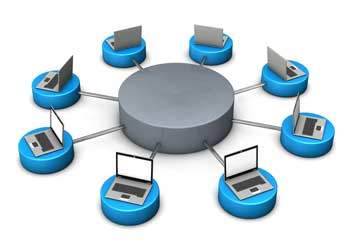1. Open Nero software.
2. Select what type of CD you want to make.
3. Insert CD.
4. Add files or folder from your computer
5. Click burn.
6. After completing, it will be ready to use
Computer & IT Tips, Download Free Softwares, Earn Money Tips, Blogging Tips, Live Cricket.
My self Muhammad Waseem Nawaz from Pakistan. i love to blogging, Desing Blogger template, Web Developing and Designing.i like to learn and share technical hacking/security tips with you,i love my friends.
LINUX
|
WINDOWS
|
1.
Linux is an open source operating system.
|
Windows
is a family of operating systems from Microsoft
|
2.
Linux can be downloaded free and can be
distributed freely.
|
Windows
cost $50 to $500 depending upon the version of the operating systems.
|
3.
Very few games available Natively on Linux.
|
Windows
supports almost all games.
|
4.
Linux has had about 60-100 viruses till date.
|
There
have been more than 60,000 Viruses in Windows Operating System.
|
5.
Linux typically provides two GUIs, KDE and
Gnome. But Linux GUI is optional
|
The
Windows GUI is an integral component of the OS and it is mainly influenced by
Mac OS and Xerox.
|
6.
Linux file system supports, Ext2, Ext3, Ext4,
Jfs, ReiserFS, Xfs, Btrfs, FAT, FAT32, NTFS
|
Windows
File System Supports. FAT, FAT32, NTFS, exFAT
|
My self Muhammad Waseem Nawaz from Pakistan. i love to blogging, Desing Blogger template, Web Developing and Designing.i like to learn and share technical hacking/security tips with you,i love my friends.
My self Muhammad Waseem Nawaz from Pakistan. i love to blogging, Desing Blogger template, Web Developing and Designing.i like to learn and share technical hacking/security tips with you,i love my friends.
| S.N. | Quality Assurance | Quality Control | Testing |
|---|---|---|---|
| 1 | Activities which ensure the implementation of processes, procedures and standards in context to verification of developed software and intended requirements. | Activities which ensure the verification of developed software with respect to documented (or not in some cases) requirements. | Activities which ensure the identification of bugs/error/defects in the Software. |
| 2 | Focuses on processes and procedures rather then conducting actual testing on the system. | Focuses on actual testing by executing Software with intend to identify bug/defect through implementation of procedures and process. | Focuses on actual testing. |
| 3 | Process oriented activities. | Product oriented activities. | Product oriented activities. |
| 4 | Preventive activities. | It is a corrective process. | It is a corrective process. |
| 5 | It is a subset of Software Test Life Cycle (STLC). | QC can be considered as the subset of Quality Assurance. | Testing is the subset of Quality Control. |
My self Muhammad Waseem Nawaz from Pakistan. i love to blogging, Desing Blogger template, Web Developing and Designing.i like to learn and share technical hacking/security tips with you,i love my friends.


My self Muhammad Waseem Nawaz from Pakistan. i love to blogging, Desing Blogger template, Web Developing and Designing.i like to learn and share technical hacking/security tips with you,i love my friends.
 A PC
A PC A Mac
A MacMy self Muhammad Waseem Nawaz from Pakistan. i love to blogging, Desing Blogger template, Web Developing and Designing.i like to learn and share technical hacking/security tips with you,i love my friends.
 The iPad, a type of tablet computer
The iPad, a type of tablet computerMy self Muhammad Waseem Nawaz from Pakistan. i love to blogging, Desing Blogger template, Web Developing and Designing.i like to learn and share technical hacking/security tips with you,i love my friends.
 A server room
A server roomMy self Muhammad Waseem Nawaz from Pakistan. i love to blogging, Desing Blogger template, Web Developing and Designing.i like to learn and share technical hacking/security tips with you,i love my friends.
 A laptop computer
A laptop computerMy self Muhammad Waseem Nawaz from Pakistan. i love to blogging, Desing Blogger template, Web Developing and Designing.i like to learn and share technical hacking/security tips with you,i love my friends.
 A desktop computer
A desktop computerMy self Muhammad Waseem Nawaz from Pakistan. i love to blogging, Desing Blogger template, Web Developing and Designing.i like to learn and share technical hacking/security tips with you,i love my friends.
My self Muhammad Waseem Nawaz from Pakistan. i love to blogging, Desing Blogger template, Web Developing and Designing.i like to learn and share technical hacking/security tips with you,i love my friends.